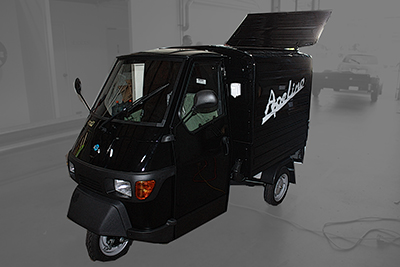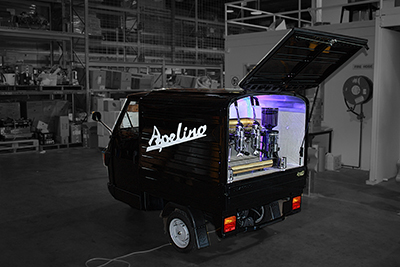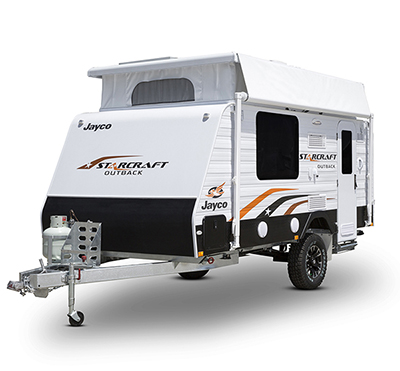HOLDEN’s new Calais luxury sports model concept, on the new VF platform, is winning friends even before it has been rolled out in the taut and muscular steel, aluminium and composite materials flesh.

New Hodlen Calais V sports unprecedented Australian motoring luxury.
To be launched mid-year, Holden is aiming for its stylish and sophisticated new VF range is set to change perceptions of Australian-made cars.
For example, the new-look flagship Calais V-Series sedan matches hi-tech instrument electronics and screen display options with precision stitching and perforated inserts on the soft leather seat trim. There is a careful attention to detail apparent throughout the Calais and it headlines Holden’s VF design strategy.
Designed to capture the attention of Australian car buyers in an increasingly competitive marketplace, the Calais V signals a major evolutionary change to Commodore, with international levels of interior design, premium fit and finish and the application of advanced technologies.
Calais V presents a range of technology firsts for a local vehicle, including Auto Park Assist, Head-up Display and Reverse Traffic Alert. The new features make VF Commodore the most advanced vehicle to be designed, engineered and built in Australia.
In addition, the Calais V-Series luxury sports concept reveals fresh exterior design treatments and a sculpted, muscular form that boosts aerodynamic efficiency.
While a new, detailed and luxurious approach to the interior design has resulted in a tailored, refined and harmonious blend of quality materials, integrated themes and thoughtful ergonomics.
INTERIOR DESIGN
Holden Design director Andrew Smith said the design team’s vision was to create a new interior environment with a richer, more cohesive feel.
“We set out to over-deliver. Consequently, there’s a level of refinement you’d expect of a high-end European product,” Mr Smith said.
“There’s a sense of being invited in, of well executed and custom-tailored detail wherever you look.
“The VF will introduce cutting edge driver technologies and we’ve ramped up every facet of the interior layout to match.
“The big new infotainment touch-screen is a prime example. It’s a great graphic interface to functions that drivers will find simple to operate, minimising distraction and maximising connection to the rest of their lives.
‘We’ve re-designed everything from the instrument panel, instrument cluster graphics, binnacle hood, centre stack and flow-on console layouts to the steering wheel, seats, storage and lighting. Controls are in better places, functions are clearly defined.
“The design team selected premium quality materials in light titanium and jet black tonings to create a layered, textured surface feel that the Calais V-Series shows off to great effect.
“Accents such as precision stitching and perforated inserts on the soft leather seat trim are reflected elsewhere in the cabin – there’s a careful attention to detail apparent everywhere you look”.
The VF Calais V’s symmetrical, ergonomically advanced interior design was driven by high-level global research into consumer expectations and preferences.
It delivers systems that are easy to use and understand and which minimise the steps required to perform a particular task. There are fewer buttons to navigate, many controls are relocated to more convenient positions and all switches have chrome identifiers.
Power window and mirror controls are now situated on the door armrests, door locks have moved to the front door and the boot release is on the driver’s door. Cruise control joins other fingertip functions on the steering wheel.
On the new centre stack, infotainment system and climate controls (now with illuminated dual temperature readouts), are entirely separated and clearly designated.
The reconfigured centre console features a covered compartment, versatile new cup holders, more small item storage, recessed electric park brake control and an easily accessible mobile phone rest and power outlet located forward of the new auto shifter. In night mode, this area and door pull recesses are illuminated by ice-blue ambient lighting.
The VF Calais V-Series also offers class-leading new seat structures with curved comfort profiles developed by GM to ensure global best practice integration, detail execution and quality standards. Driver and front passenger seats combine snug sports back and bolster support with superior cushioning.
The show car is upholstered in a modern combination of fine-grained light titanium leather with suede and perforated leather inserts, accent stitching and a central jet black strip detail.
A neutral timber-grained finish follows the full-width curvilinear form of the instrument panel. High chrome finishes on the tactile new steering wheel and elsewhere are complemented by subtle galvano silver chrome elements.
The overall result is harmonious, first-class and refined in every aspect.
EXTERIOR DESIGN
Holden chief designer for creative design, Richard Ferlazzo, said the VF’s handsome new silhouette holds true to traditional concepts.
“However, this time we’ve raised the bar. We’ve taken a great existing form and brought it up to another level,” Mr Ferlazzo said.
“The surfacing is more flamboyant and contemporary, way more sophisticated. We’ve succeeded in putting in more action and detail.
“One of our main goals was to improve aerodynamic performance and as a result many visual elements are much bolder. There’s also more embellishment in terms of chrome highlights. Headlamp and tail lamp treatments are layered, complex and intricately detailed.
“You’ll notice that the hood is more prominent, with a centre crease that emphasises performance potential and two raking spears sweeping in from the A-pillars. They point focus at the elegant new Calais V front fascia with its slim LED daylight running lamps and signature trapezoidal grille.
“The new vertical fender vents highlight the long dash-to-axle proportion that’s very much part of the design DNA.
“The flowing side detailing, the upper line that incorporates the decklid into the C-pillar, the upswept ducktail aero effect – they exemplify the sculpted approach we’ve taken to exterior surfacing.
“Of course the twenty-inch, double ten-spoke show car alloys make their own statement.
“The rear graphic is distinctively different, more streamlined. With the brilliant new integrated tail lamps and the license plate moved to the lower fascia, it’s a wider, cleaner look.
“Aerodynamically, this vehicle has been tuned to the nth degree. Even the fine vertical style crease that runs through the tail lamps has a purpose beyond good looks”.
COLOUR AND TRIM
The opulence of the newly designed VF interior is reflected through Holden Design’s modern and luxurious colour and trim strategy.
The 2013 Calais V interior environment has been enhanced with a strong focus on custom-tailored detail, with finishes like perforated materials, suedes and chrome carefully selected to reflect the luxury sport design theme. Additional accents of wood and chrome also give the interior an air of modern sophistication.
Two interior images were created – a dark image with light titanium accents and more technical decoration strategy – and a lighter interior environment, which points to the ultimate in luxury styling.
Both images place a strong emphasis on decoration, with a carefully considered layering of materials, more jewelled decoration and stitching detail. Materials are repeated across different elements in the interior such as the seats and instrument panel, to augment the sense of luxury.
Bright décor also helps to emphasise the luxuriousness of the interior space.
Chief designer for colour and trim design, Sharon Gauci said designing VF gave the team the opportunity to decorate more elements in the car, with the aim of achieving a sense of richness through all of the materials.
“The new VF interior environment is designed to go above and beyond traditional customer expectations,” Ms Gauci said.
“With VF, we aimed to create the ultimate interior for the price point with a harmonious and cohesive approach to our colour and trim strategy.
“The VF Calais V show car presents a very connected interior environment and we’re satisfied we have met the brief for a technical, modern and luxurious interior.”
EXTERIOR FEATURE HIGHLIGHTS
The Calais V lower front fascia features black honeycomb mesh insert detail on a chrome-laced central air intake. Outboard ports sport chrome over-riders and an LED daylight running lamp/park lamp combination, integrated by a stand-out chrome ribbon.
The deep, trapezoidal grille has a bright chrome surround, header and horizontal bars; prominent Holden branding against a gloss black textured mesh background.
Fluid, sculptural halogen projector headlamps are strikingly shaped and jewelled, with intricate internal layers, a light guide ‘eyebrow’, a hooded flash detail that runs down and over the projector and black bezel detailing.
The fascia is flanked by prominent front fenders and flared, aero-modified wheel arches.
The Calais V show car’s deep-dished 20-inch double 10-spoke machine-faced alloy wheels feature radial triangular elements.
Slim vertical fender vents with a chrome surround incorporate repeater lamps.
Door handle surrounds, belt line and door frame mouldings are finished in bright chrome, while the Prussian Steel Concept exterior colour echoes the luxury styling of the bright chrome exterior finishes.
Replicating the fluid headlamp design, the integrated tail lamps extend into the decklid. They incorporate complex jewellery detailing and chrome rings surround instantly identifiable red-lit ‘hotspots’.
Further features include a V-Series decklid badge, new reflectors in the lower valance and dual circular chrome exhaust outlets.
Watch out Mercedes, BMW, Lexus, Jaguar, Audi …
www.holden.com.au
ends



 How to resolve AdBlock issue?
How to resolve AdBlock issue? 


 THE economic and wider business and social impact of the automotive industry is too important to be left to chance, the Victorian Employers' Chamber of Commerce and Industry (VECCI) has warned.
THE economic and wider business and social impact of the automotive industry is too important to be left to chance, the Victorian Employers' Chamber of Commerce and Industry (VECCI) has warned. 


